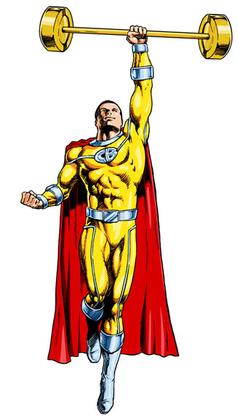Liwayway is a leading Tagalog weekly magazine published in the Philippines since 1922. It contains Tagalog serialized novels, short stories, poetry, serialized comics, essays, news features, entertainment news and articles, and many others. In fact, it is the oldest Tagalog magazine in the Philippines. Its sister publications are Bannawag, Bisaya Magasin, and Hiligaynon.

Lauro "Larry" Zarate Alcala ONA was a well-known editorial cartoonist and illustrator in the Philippines. In 2018, he was posthumously conferred the National Artist for Visual Arts title and the Grand Collar of the Order of National Artists.
Philippine Comics have been popular throughout the nation from the 1920s to the present. Comics scholar John A. Lent posited that the Philippine comics tradition has "the strongest audience appeal, best-known cartooning geniuses, and most varied comics content" in Asia after Japan and Hong Kong.
Mga Kuwento ni Lola Basyang is an anthology of short stories written by "Lola Basyang," the pen name of Severino Reyes, founder and editor of the Tagalog magazine, Liwayway. The original magazine stories have since been adapted into books, comics, television, and film.
Jim M. Fernandez was a Filipino comic book artist best known for his works on Aztec and Aliwan Komiks. He also popularized the fictional character, Zuma in his novels. Apart from being an editor, illustrator, cartoonist, and writer for Philippine comics, Fernandez was also a certified public accountant in the Philippines.
Bienvenido Munoz Noriega Jr. (1952–1994) was a Philippine playwright.

Captain Barbell is a Filipino superhero created by writer, Mars Ravelo and artist Jim Fernandez. His characteristics are similar to American fictional superheroes Superman, DC Comics' Captain Marvel or Shazam, and Thor but Ravelo based his backstory on Captain America. He first appeared in Pinoy Komiks #1 on May 23, 1963. He also appeared in Kampeon Komiks.
Kulafu was one of the earliest comic book heroes in the Philippines. Created on July 7, 1933, by Filipino illustrator Francisco Reyes and Filipino writer Pedrito Reyes, Kulafu appeared on the first colored adventure strip and the first two-page comic strip in the Philippines, under the same title.

Francisco Vicente Coching was a Filipino comic book illustrator and writer during the Golden Age of Philippine comics. He is regarded as one of the "pillars of the Philippine Komiks Industry", the "King of Komiks", and the "Dean of Philippine Comics". He created the iconic characters Pedro Penduko, Hagibis, and Sabas, ang barbaro.
Federico C. Javinal is considered one of the “great achievers in Philippine Art”, particularly in the field of Philippine comics.
José Zabala-Santos, nicknamed as "Mang Pepe" by hometown neighbors and as "Zabala" by colleagues in the cartooning profession, was a successful cartoonist in the Philippines and was one of the pioneers of Philippine comics. He became one of the most popular cartoonists in the Philippines during the 1950s because of his cartoon characters such Popoy, Sianong Sano, and Lukas Malakas. Zabala is one of the "respected names" of artists in the Philippine cartoon and comics industry.

Halakhak Komiks is the first regularly published comics magazine in the Philippines. Its first publication was on November 15, 1946. It was founded by Filipino illustrator Isaac Tolentino and Filipino lawyer Jaime Lucas.

Antonio "Tony" Velasquez was a Filipino illustrator regarded as the Father of Tagalog comics and as the pioneer and founding father of the Philippine comics industry. He was the co-creator of Kenkoy, an “iconic Philippine comic strip character”.
Dominador "Hal" Santiago (August 9, 1941 – February 21, 2021) was a Filipino illustrator and writer in the field of Philippine comics. Santiago was described by Filipino writer Jim M. Fernandez as the “Raphael of [Philippine comic book] Illustrators”. His illustrations for eight comics series made him one of the most prolific Filipino comic illustrators, second only to Mar T. Santana, who has illustrated 17 series.
Elena M. Patron-de los Angeles, commonly known by her maiden name Elena Patron, was a Filipina scriptwriter, novelist, poet, dramatist, essayist, and magazine columnist. Patron was one of the few women in the Philippines who ventured and succeeded in writing for Philippine comics, a field that was dominated by Filipino male writers.

Ukala (Ang Walang Suko), meaning "Ukala (The Unrelenting)" [i.e. the one who doesn't give up] was a comic strip title in Philippine comics. The main character in the comic book story is Ukala. Ukala was created in the 1950s by distinguished Filipino illustrator Alfredo Alcala. Ukala, the character, was a Native American Indian or "Amerindian". The story, written and illustrated by Alcala for Filipino readers, was about the adventures of Native American Indians set at a timeline when the first Europeans arrived in the Northwestern region of the Americas. Ukala was adapted into film as Ukala (Ang Walang Takot), meaning "Ukala (The Fearless)" in the Tagalog language. It appeared on the pages of the Philippine comic book named Pilipino Komiks. It had been made into movie by Sampaguita Pictures, directed by Artemio B. Tecson in 1954. Leading performers were Cesar Ramirez in the title role and Alicia Vergel as Margarita.
Virgilio "Virgil" Redondo y Purugganan was a Filipino comic book writer and artist.
Clodualdo del Mundo Sr. was a Filipino novelist, playwright, essayist, short story writer, journalist, screenwriter, teacher, critic. Many comics fans know him as the prolific writer of komiks through Liwayway and Ace Publications.
In the Philippines, cartooning applies visual artists who make cartoon characters to their own comic strip or book as a whole began with the publication of local comic books, known as komiks.







